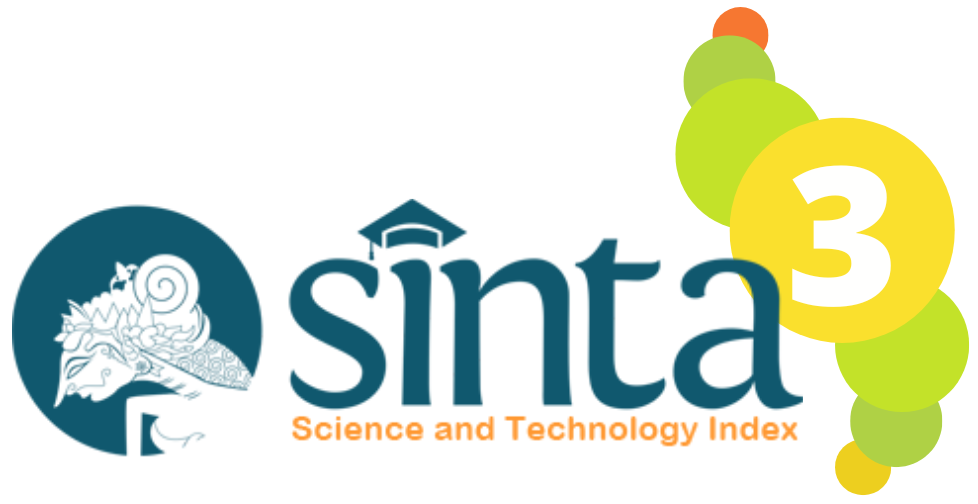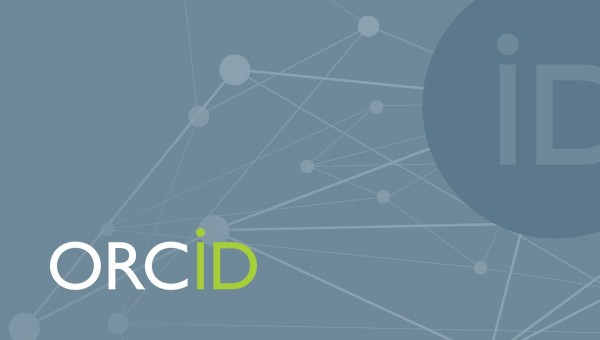The Effect of PjBL on Critical Thinking Skills of High School Students in Physics Learning on Topic of Static Fluid
DOI:
10.29303/jpft.v11i1.9055Published:
2025-06-13Issue:
Vol. 11 No. 1 (2025): January-JuneKeywords:
Project based learning, Critical thinking skills, Static fluidArticles
Downloads
How to Cite
Downloads
Metrics
Abstract
In the 21st century, students are required to possess a variety of skills to face the challenges of the times, one of which is critical thinking. Educational activities, including physics instruction, serve as an important medium for fostering these skills. However, physics is often perceived as a challenging subject, primarily due to the dominance of teacher-centered learning models. This highlights the need for student-centered approaches that actively engage learners in the educational process. One such approach is the Project-Based Learning (PjBL) model. This study aims to examine the effect of the PjBL model on students' critical thinking skills in physics learning, specifically on the topic of static fluids. The hypotheses tested in this study are: H₀ (there is no significant effect of the PjBL model on students’ critical thinking skills) and Hₐ (the PjBL model has a significant effect on students’ critical thinking skills). The research employs a quasi-experimental design with a control group. The population consists of Grade XI students at SMA IT Abu Hurairah Putri, Mataram City. A saturated sampling technique was used, with class XI MIPA 1 assigned as the experimental group and XI MIPA 2 as the control group. The research instrument was a critical thinking test comprising four questions, all of which were previously validated and proven reliable. Data analysis was conducted using the Mann-Whitney U test at a 5% significance level. The results indicate a p-value of 0.001, which is less than the threshold of 0.05. Thus, the null hypothesis (H₀) is rejected, leading to the conclusion that the PjBL model has a significant effect on students' critical thinking skills.
References
'Ardhuha, J., Hairunnisyah, S., & Siti, M. U. (2022). Desain dan Pengembangan Perangkat Pembelajaran Model Guided Inquiry Berbantuan Simulasi PhET untuk Meningkatkan Penguasaan Konsep Usaha dan Energi Peserta Didik. Jurnal Ilmiah Profesi Pendidikan. 7(3). 1143-1149. DOI: https://doi.org/10.29303/jipp.v7i3.711
Astuti, A. F., Desnita, Amali, P., & Emiliannur. (2024) Comparison of Students’ Critical Thinking Ability Between PBL and PjBL Learning Groups on Enviromental Pollution Material Phase-E at SMAN 1 2x11 Kayu Tanam. ORBITA: Jurnal Pendidikan dan Ilmu Fisika. 10 (2). 127-137. DOI: https://doi.org/10.31764/orbita.v10i2.23679
Dywan, A., A., & Gamaliel, S., A. (2020). Efektivitas Model Pembelajaran Project Based Learning Berbasis STEM dan Tidak Berbasis STEM Terhadap Keterampilan Berpikir Kritis Peserta didik. Jurnal Basicedu. 4(2). DOI: https://doi.org/10.31004/basicedu.v4i2.353
Gokpinar, F., & Gokpinar, S. (2021). A New Exact p-Value Approach For Testing Variance Homogeneity. Journal Of Statistical Computation And Simulation. 91(15). 2927-2947.
Hamzah, R.A., Romi, M., Karmila, B.K., Nur, A., Aditya, H., Gita, P.A., Frida, M.Y., Desty, E.S., Febriyanti, Laila, Varetha, L., Ramadhani, M.I., Siti, H.L., Saidah, T., Ramdhansyah, B.A., & Titen, P. (2023). Strategi Pembelajaran Abad 21. Deli Serdang : PT. Mifandi Mandiri Digital
Hasani, R., ‘Ardhuha, J., Harjono, A., & Kosim, K. (2024) The Effect of STEAM-Based Project Based-Learning Model on the Critival Thinking Skills of Eleventh-Grade Students in the Topics of Elasticity and Hooke’s Law. Jurnal Pendidikan Fisika dan Teknologi (JPFT). 10 (2). 395-402. DOI: https://doi.org/10.29303/jpft.v10i2.7960
Hidayati, R., P., Edi, H., M., & Elan. (2020). Kebutuhan Dasar Pengembangan Rancangan Rencana Pelaksanaan Latihan Pramuka Prasiaga untuk Memfasilitasi Sikap Ilmiah Anak. Jurnal PAUD Agapedia. 4 (2). 242-257. DOI: https://doi.org/10.17509/jpa.v4i2.30444
Hutasoit, S. A. (2021). Pembelajaran Teacher Centered Learning (TCL) dan Project Based Learning (PjBL) Dalam Mengembangkan Kinerja Ilmiah dan Peninjauan Karakter Peserta didik. Jurnal Pendidikan Indonesia (Japendi). 2 (10). 1775-1799. DOI: https://doi.org/10.59141/japendi.v2i10.294
Kementerian Pendidikan dan Kebudayaan. (2018). Buku Pegangan Pembelajaran Berorientasi pada Keterampulan Berpikir Tingkat Tinggi: Program Peningkatan Kompetensi Pembelajaran Berbasis Zonasi. Jakarta: Direktorat Jenderal Guru dan Tenaga Kependidikan; Kementerian Pendidikan dan Kebudayaan.
Kurniahtunnisa, Warouw, Z., W., M., & Rukmana, M. (2024). Pengembangan Instrumen Kemampuan Berpikir Kritis pada Materi Sistem Penapasan. Eduproxima: Jurnal Ilmiah Pendidikan IPA. 6 (2). 448-456. DOI: https://doi.org/10.29100/.v6i2.5224
Mukherjee, H., & Bhonge, P. (2025). Assesing Skew Normality in Marks Distribution: A Comparative Analysis of Shapiro-Wilk Test. arXiv. https://arxiv.org/abs/2501.14845
Parwati, G., A., Rapi, N., K., & Rachmawati, D., O. (2020). Penerapan Model Inquiri Terbimbing untuk Meningkatkan Kemampuan Berpikir Kritis dan Sikap Ilmiah Peserta didik SMA. Jurnal Pendidikan Fisika Undiksha. 10(1). DOI: https://doi.org/10.23887/jjpf.v10i1.26724
Riyadi, A.S., Alimah, S., & Saptono, S. (2020). Effectiveness of Project Based Learning Model on Collaborative Ability and Critical Thinking of Senior High School Students. Journal of Innovative Science Education. 9 (3). 154-161.
Saepuloh, D., Sabur, A., Lestari, S., & Mukhlishoh, S. U. (2021). Improving Students’ Critical Thinking and Self-Efficiacy by Learning Higher Order Thinking Skills Through Problem Based Learning Models. Jurnal Pendidikan Indonesia. 10 (1) DOI: https://doi.org/10.23887/jpi-undiksha.v10i3.31029
Sahida, D. (2020). Implementasi Model Problem Based Learning pada Pembelajaran Fisika Peserta didik Sekolah Menengah dalam Meningkatkan Kemampuan Pemecahan Masalah. Jurnal Edu Research. 1(4). DOI: https://doi.org/10.47827/vol1iss4pp44-56
Sari, A. A. I., & Lutfi, A. (2023) Kemampuan Berpikir Kritis Siswa dalam Pembelajaran Matematika Melalui Pendekatan Inkuiri. Jurnal Simki Pedagogja. 6 (1). 118-129. DOI: https://doi.org/10.29407/jsp.v6i1.225
Setyaningsih, A., Fauziah, G., N., & Napsawati, N. Analisis Kesulitan Belajar Peserta Didik Politeknik Ilmu Pelayaran Makassar terhadap Mata Pelajaran Fisika pada Materi Kecepatan dan Percepatan. (2024). Karst: Jurnal Pendidikan Fisika dan Terapannya. 7 (2). 58-66. DOI: https://doi.org/10.46918/karst.v7i2.2464
Sugiyono. (2019). Metode Penelitian dan Pengembangan. Bandung: Alfabeta.
Susilawati, M., Selpia, D., Fathurrahman, M., Pratiwi, N., & Purnami, R. (2025). Penerapan Uji Mann Whitney dalam Perbandingan Prestasi Akademik Mahasiswa Statistika Universitas Hamzanwadi Angkatan 2022 dan 2023. Jurnal Eksbar. 1(2). DOI: https://doi.org/10.29408/eksbar.v1i2.28811
Susilowati, Y., & Sumaji. (2020). Interseksi Berpikir Kritis dengan High Order Thinking Skill (HOTS) Berdasarkan Taksonomi Bloom. Jurnal Silogisme: Kajian Ilmu Matematika dan Pembelajarannya. 5 (2). 62-71. DOI: https://doi.org/10.24269/silogisme.v5i2.2850
Telaumbanua, R. (2024). Penerapan Model Project Based Learning (PjBL) Terhadap Critical Thinking Skills Siswa Terintegrasi Higher Order Thinking Skills (HOTS). Skripsi S1. Universitas Jambi. Diakses dari https://repository.unja.ac.id/66967/
Vuztasari, H., & Diyana, T., N. (2024). Analisis Kesulitan Beserta Tinjauan Tingkat Motivasi Belajar Mata Pelajaraan Fisika pada Peserta Didik SMA. Jurnal Luminous. 5 (1). 8-14. DOI: https://doi.org/10.31851/luminous.v5i1.11977
Wahyudi, Verawati, N., N., S., P., & Ayub, S. (2019). The Effect of Scientific Creativity in Inquiry Learning to Promote Critical Thinking Ability of Prospective Teachers. iJET. 14 (14). 122-131. DOI: https://doi.org/10.3991/ijet.v14i14.9532
Wahyudi, W. (2021). Penerapan Model Pembelajaran Project Based Learning untuk Meningkatkan Hasil Belajar Fisika Materi Listrik Statis dan Listrik Dinamis. Journal of Education Action Research. 5 (1). 57-66. DOI: https://doi.org/10.23887/jear.v5i1.31997
Wulandari, N., O., Sutrio, Doyan, A., & Rahayu, S. (2024). The Influence of Project Based Learning Model on Creative Thinking Skills and Physics Learning Outcomes. Jurnal Penelitian Pendidikan IPA. 10 (12). 10660-10669. DOI: https://doi.org/10.29303/jppipa.v10i12.9738
Zakiah, L., & Ika, L. (2019). Berpikir Kritis dalam Konteks Pembelajaran. Bogor: Erzatama Karya Abadi.
Author Biographies
Putri Julia Maemum, Mataram University
Jannatin 'Ardhuha, University of Mataram
Physics Education
Sutrio Sutrio, University of Mataram
Physics Education
Wahyudi Wahyudi, University of Mataram
Physics Education
License
Copyright (c) 2025 Putri Julia Maemum, Jannatin 'Ardhuha, Sutrio Sutrio, Wahyudi Wahyudi

This work is licensed under a Creative Commons Attribution-ShareAlike 4.0 International License.
Authors who publish with Jurnal Pendidikan Fisika dan Teknologi (JPFT) agree to the following terms:
- Authors retain copyright and grant the journal right of first publication with the work simultaneously licensed under a Creative Commons Attribution License 4.0 International License (CC-BY-SA License). This license allows authors to use all articles, data sets, graphics, and appendices in data mining applications, search engines, web sites, blogs, and other platforms by providing an appropriate reference. The journal allows the author(s) to hold the copyright without restrictions and will retain publishing rights without restrictions.
- Authors are able to enter into separate, additional contractual arrangements for the non-exclusive distribution of the journal's published version of the work (e.g., post it to an institutional repository or publish it in a book), with an acknowledgement of its initial publication in Jurnal Pendidikan Fisika dan Teknologi (JPFT).
- Authors are permitted and encouraged to post their work online (e.g., in institutional repositories or on their website) prior to and during the submission process, as it can lead to productive exchanges, as well as earlier and greater citation of published work (See The Effect of Open Access).










